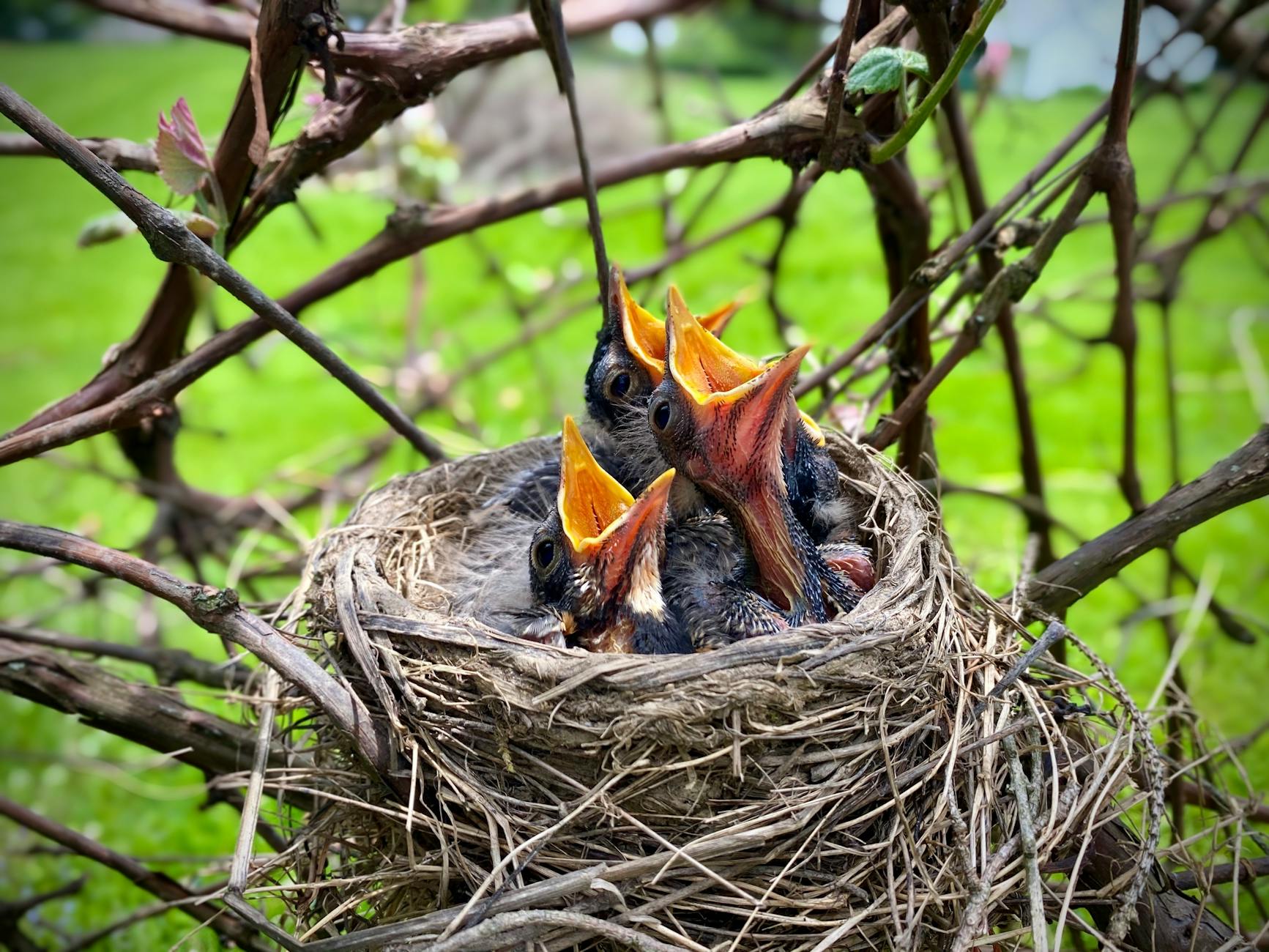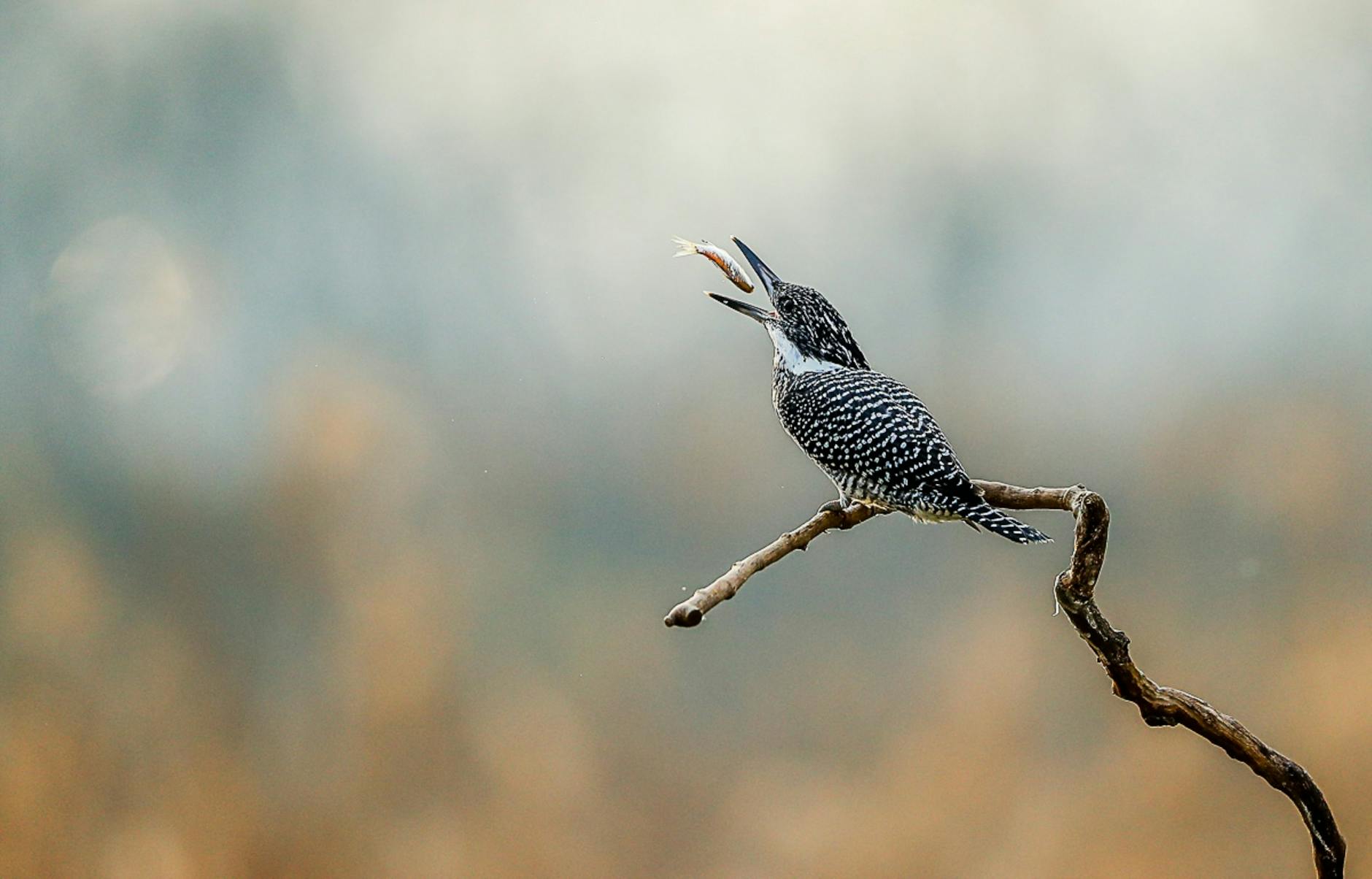The Kingfisher Life Cycle: From Egg to Adult Explained
Kingfishers are strikingly beautiful birds known for their vibrant colours and remarkable fishing skills. But have you ever wondered how their life cycle unfolds from a mere egg to a fully grown adult? In this post, we’ll take a closer look at this fascinating journey.
Kingfishers typically lay around six to seven eggs, which both parents incubate for roughly 19 to 24 days. After hatching, the chicks rely heavily on their parents for food and protection during their early weeks. This period is crucial, as they quickly develop the skills necessary for survival.
Join us as we explore each stage of the kingfisher’s life cycle, from the moment they emerge from their eggs to the time they take their first flight. You’ll gain insight into the remarkable adaptations that enable these birds to thrive in their environments.
Egg Stage of the Kingfisher
During the egg stage, the kingfisher’s life cycle takes an interesting turn. Here’s what goes on behind the scenes in their nesting and incubation process.
Nest Construction
Kingfishers are unique in their nesting habits. Unlike many birds, they often build their nests in burrows along riverbanks, which provide safety and seclusion. These burrows can reach lengths of up to one metre. The female, after mating, starts digging a tunnel in a bank, gradually creating a slightly larger oval-shaped chamber at the end to house the eggs. This chamber is designed to be angled downwards, preventing the eggs from rolling out and ensuring a secure environment for their development. It’s fascinating how kingfishers adapt to their surroundings to protect their offspring. For more insights on how they build their nests, check out this resource from the Scottish Wildlife Trust.

Photo by Chlla Kutte
Egg Characteristics
The eggs of the kingfisher are a sight to behold. Typically, a kingfisher lays about six to seven eggs, although this number can vary. These eggs are fairly small, measuring around 2.5 to 3 cm in width, and their colour ranges from a pure white to slightly glossy. This bright appearance helps the parents easily locate their eggs within the dimly lit burrow. In total, the eggs hatch after an incubation period of approximately 19 to 24 days, during which both parents take turns monitoring their nest and protecting their future chicks. For additional details on kingfisher eggs, visit All About Birds.
Incubation Period
Incubation is a critical stage in the kingfisher’s reproductive cycle. The incubation period lasts between 22 to 24 days, depending on environmental factors. During this time, both the male and female share incubation duties, ensuring that their eggs remain warm and safe. While the female often spends more time on the nest, the male provides her with food, allowing her to stay nourished. This shared responsibility showcases their strong partnership and commitment to raising their young. To learn more about the roles of the parents during incubation, refer to the Belted Kingfisher page on ABC Birds.
Hatching and Early Life
As the incubation period concludes, the anticipation of new life within the nest builds. Hatching is a critical phase in the kingfisher lifecycle, leading to the emergence of fragile chicks that need immense care and nurturing. Here’s a closer look at what this phase entails.
Hatching Process
Kingfisher eggs generally take between 22 to 24 days to hatch. This timeframe can vary slightly based on environmental conditions such as temperature and humidity. The hatching process tends to occur synchronously, with the first chicks emerging around dawn. This is a strategic adaptation; hatching during daylight makes it easier for the parents to spot and care for the newly hatched offspring. When the chicks begin to emerge, they use their small egg tooth, a temporary structure, to chip away at the eggshell. It’s a delicate yet determined effort that underscores their instinctual drive to survive. You can learn more about the kingfisher hatching process from All About Birds.
Nestling Development
Once the chicks are free from their shells, they enter the nestling stage. During this time, they are entirely dependent on their parents for survival. In the nest, nestlings are altricial, meaning they are born naked and helpless, needing warmth and food. Over the next few weeks, they undergo rapid growth and development.
- Physical Development: Initially, the chicks’ eyes are closed, and they are covered in a fine layer of down. Over the first week, they start to develop feathers, and their eyes open around day 10. By the second week, they grow larger and stronger, preparing for their eventual fledging.
- Behavioural Development: Their behaviours begin to emerge quickly as well. They start vocalising with softer chirps, gradually progressing to louder calls that signal their needs. This vocalisation is crucial for communication with the parents, especially during feeding times.
For more insight into what nestlings go through, visit ResearchGate’s article on kingfisher nestlings.

Photo by Joe Kritz
Feeding by Parents
The feeding habits of adult kingfishers play a pivotal role in the survival of their chicks. Both parents are actively involved in providing food, usually consisting of small fish, amphibians, and insects.
- Feeding Frequency: Parents will feed their chicks every 15-30 minutes, constantly catching food and bringing it back to the nest.
- Types of Food: The diet primarily includes small fish, but they also provide crustaceans and occasional insects. The parents regurgitate food into the mouths of their young, ensuring they receive the necessary nutrients to grow.
This feeding routine continues for several weeks, as chicks require a significant amount of energy to support their growth and development. To dive deeper into what kingfishers eat, check out this comprehensive guide on their diet from BirdFact.
Growth to Adulthood
As kingfishers transition from fragile chicks to independent adults, several significant stages play a vital role in their development. This journey encompasses fledging, learning to hunt, and reaching sexual maturity. Each step is essential for ensuring the survival of these stunning birds in the wild.
Fledging Stage
The fledging stage marks a crucial turning point in a kingfisher’s life. After approximately 27 to 29 days in the nest, the young birds are ready to leave their burrow. This process involves the chicks making their first attempts at flight, typically happening around 4 weeks after hatching.
- First Flight: Chicks often take their first flights within a 100-yard radius of the nest. The parents encourage them by calling and offering food, helping to build their confidence.
- Parental Support: During this period, parents continue to provide both food and guidance. They remain close, using rattle calls to communicate and direct the fledglings toward safe areas.
- Survival Skills: Many fledglings still depend on their parents for a few weeks until they become more adept at finding food and evading predators. For an in-depth look at this stage, check out the article from Robert E. Fuller.

Photo by RDNE Stock project
Learning to Hunt
Once fledglings gain some independence, they must rapidly learn to hunt. This phase is vital for ensuring their survival as they transition into adult kingfishers.
- Hunting Techniques: Initially, young kingfishers observe their parents during hunting expeditions. They learn various techniques, such as sitting silently on perches and diving into the water to catch prey.
- Early Diet: At this stage, their diet primarily consists of small fish and insects, although they gradually refine their preferences as they grow. Their initial attempts may lead to misses, but patience and practice are key.
- Habitat Familiarisation: Young kingfishers will often explore their surroundings, learning which areas yield the best hunting opportunities. To understand their behaviours and techniques in detail, visit Nature Back In for insights into their hunting skills.
Maturation Timeline
As kingfishers continue to grow, they approach sexual maturity. The timeline to reach full maturity varies depending on the species and environmental factors.
- Sexual Maturity: Kingfishers typically reach sexual maturity within one year, though some may take longer. During this time, they develop the striking plumage that distinguishes adults from juveniles.
- Breeding Readiness: By the end of their first year, kingfishers are usually ready to mate and start their own families. They exhibit a range of behavioural changes as they prepare for breeding seasons, including vocalisations and increased territoriality.
- Social Connections: Young kingfishers often stay with their parents for several months, learning crucial survival skills before venturing out to find territories of their own. For a broader understanding of their life cycle, consult All About Birds.
Challenges and Survival
Kingfishers face various challenges throughout their life cycle, impacting their survival and overall populations. Understanding these challenges can provide insights into how these vibrant birds navigate threats from nature and human activity.
Predators and Threats
Kingfisher eggs and chicks encounter several natural threats. Some of the common predators include:
- Birds of Prey: Larger birds, like hawks and owls, often prey on adult kingfishers and their young.
- Mammals: Raccoons and foxes are known to raid nests to eat the eggs or chicks.
- Reptiles: Snakes can access nests in burrows, posing a significant danger to the vulnerable young.
These predators can significantly reduce survival rates, especially during the early stages of a kingfisher’s life. For more detailed insights, explore the article on Belted Kingfisher from ABC Birds.

Photo by Adam Chen
Environmental Factors
Environmental conditions critically influence kingfisher populations. Changes in habitat can lead to various challenges:
- Habitat Destruction: Activities such as logging and urban development alter natural habitats, reducing nesting areas.
- Pollution: Contaminated water affects the availability of prey species, which in turn impacts kingfishers’ ability to hunt and feed.
- Climate Change: Variability in weather patterns affects food supply and habitat stability. Rising temperatures can lead to shifts in breeding times and locations.
Recent studies show that kingfishers are sensitive to environmental changes. Higher densities of these birds are found in areas with clear water and abundant trees, highlighting the importance of healthy ecosystems. Learn more about these factors in the paper on Long-term anthropogenic stressors.
Conservation Status
Efforts are underway to protect kingfishers and their habitats. Conservation initiatives focus on:
- Habitat Restoration: Efforts to replant native vegetation along waterways help improve breeding sites.
- Pollution Reduction: Works to reduce water pollution enhance fish populations that kingfishers rely on for food.
- Education and Awareness: Raising awareness about the importance of preserving these birds encourages community involvement in local conservation efforts.
The conservation status of various kingfisher species varies. While some populations are stable, others face significant threats due to habitat loss and environmental changes. Information about these efforts can be found on The Audubon Field Guide.
Understanding these challenges is crucial for the ongoing survival of kingfishers in their ecosystems.
Conclusion
Understanding the life cycle of kingfishers is essential for appreciating these remarkable birds and their role in ecosystems. Each stage, from hatching to maturity, highlights the delicate balance of survival and nurturing that defines their existence.
By learning about their challenges, we can better support conservation efforts aimed at protecting their habitats and ensuring their future.
Engage with your local wildlife community or explore ways to enhance natural environments. What actions can you take to contribute to the preservation of kingfishers?










